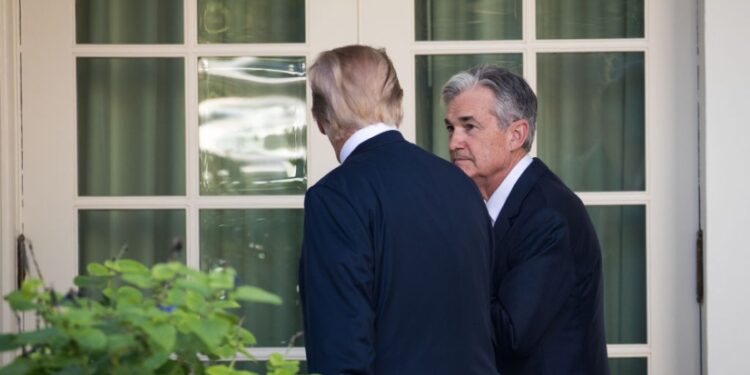
The Federal Reserve cut interest rates by 0.25 percentage points Thursday, the second consecutive cut after a two-year rate-hike run to curb postpandemic inflation.
The Federal Open Market Committee (FOMC), the panel of Fed officials responsible for setting interest rates, dropped its baseline borrowing cost range down to a range of 4.5 to 4.75 percent.
The rate cut, which was widely expected by economists and Fed watchers, is the central bank’s second of the year. The Fed hiked rates rapidly in the face of high inflation, then left them at elevated levels to snuff out rapid price growth.
“The Federal Reserve continues to lift the foot off the brake pedal, cutting interest rates by one-quarter percentage point, as expected. The solid pace of economic growth means the Fed can abandon the urgency seen with the half-point cut in September and take a more deliberate, quarter-point pace with this and future rate cuts,” said Greg McBride, chief financial analyst at Bankrate.
While inflation has come down drastically, the sticker shock of higher prices was ultimately too much for Americans who elected President-elect Trump two days ago to a second term, threatening to shake up an economy that has only recently righted itself.
Trump has promised to implement massive tariffs on imports to the U.S. and, if Republicans manage to take the House as they have the Senate and White House, further slash the corporate tax rate and extend 2017 tax cuts.
Economists surveyed last month by The Wall Street Journal expected higher inflation, deficits and interest rates under Trump’s proposed policies. Trump has panned those criticisms, insisting those experts are wrong and have consistently misjudged his economic agenda.
The White House has no control over interest rates — despite Trump’s comments in August that he has “made a lot of money” so he should “have at least a say” — but if inflation starts to creep up again, the Fed is expected to raise interest rates again to try to bring prices down.
When asked about how the Fed was accounting for the election and incoming administration in upcoming monetary policy decisions, Powell said, “We don’t we don’t guess, we don’t speculate and we don’t assume.”
“We don’t know what the timing and substance of any policy changes will be. We therefore don’t know what the effects on the economy would be,” he said.
While the economy and labor market remained surprisingly resilient throughout the Fed’s rate hike crusade, last Friday’s jobs report showed the economy added just 12,000 jobs in October.
That’s the lowest report in nearly four years and a potential warning sign as the Fed monitors the labor market slowdown, although major hurricanes in the South and the Boeing machinists strike notably pulled down the latest report.
While Fed Chair Jerome Powell has repeatedly stated his agency’s commitment to political independence, the return of Trump threatens to shake up the remainder of his term, which ends in 2026.
Trump appointed Powell in 2017, but the relationship quickly soured as the former president publicly berated the chair for raising interest rates during his tenure.
Trump this summer defended his right to comment on monetary policy including interest rates, telling Bloomberg, “I think it’s fine for a president to talk. It doesn’t mean that they have to listen.”
The Fed will consider one more interest rate cut in December, the last before Trump takes office in January.







